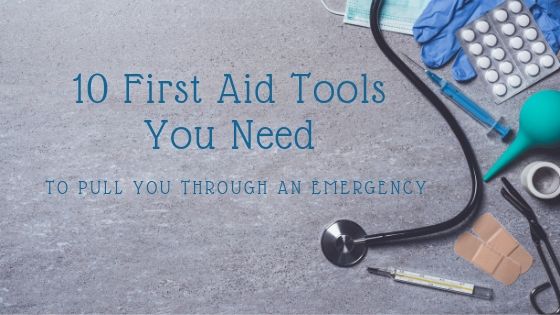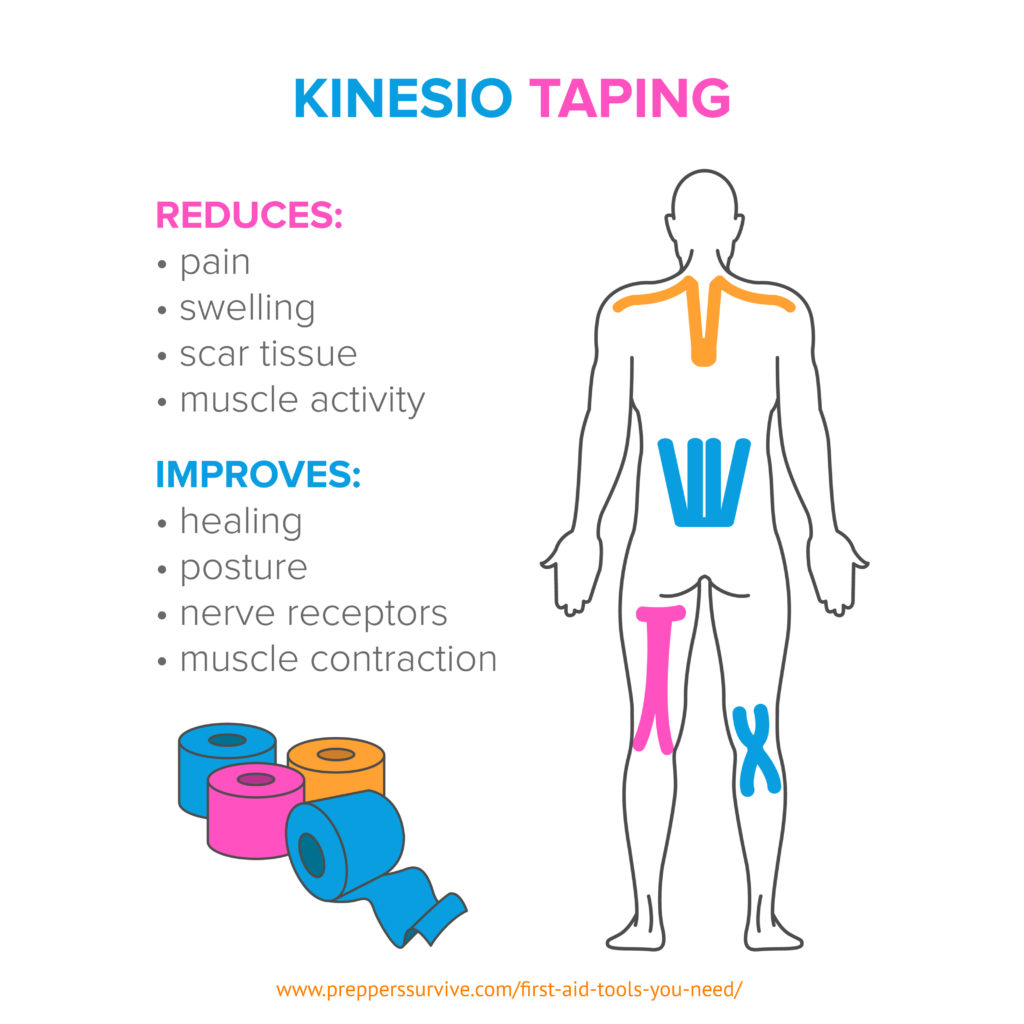
In times of emergency, there are first aid tools you need in order to be as self-sufficient as possible. Minor medical care might be necessary during a disaster when it may take days to be seen by a medical specialist in an overcrowded hospital. Having a few medical supplies in your prevention plan could aid in your overall health and wellness. These medical supplies are very basic, easy to learn, and they are fairly inexpensive. I see many first aid kits filled with items that need to be replaced every 3-7 years. Items such as medicines, adhesives, and devices that use specialized batteries get thrown away after they expire. Most of the medical supplies listed below will not expire and can be sterilized and used multiple times to treat basic cases that left unaddressed could become far more dangerous.
10 First Aid Tools to Consider
1. Oximeter
During a pandemic, the ability to monitor your oxygen levels and pulse can be a vital resource. An oximeter is a small digital device that is placed on a finger which displays your blood oxygen saturation level and pulse rate in seconds. Being able to determine if either are low can help you make important decisions about your health.
2. Scalpel
My scalpel gets used most often to reach deep splinters before they can become infected. The uses for a scalpel increase based on the level of medical education you have. They can be used to drain an infection or abscess, amputate frostbitten toes, cut off skin tags, and surgeons use them to operate on patients.
3. Tweezers
Having a variety of tweezers can aid in removing splinters, foreign debris, or even bullets. Whether you’re facing a hurricane, tornado, or an earthquake there’s a good chance for the need to remove foreign debris from the skin. If you’re trying to remove small items such as broken glass or asphalt tweezers would come in handy. Many first aid kits have tweezers that aren’t helpful with even the most basic splinter, cheap tweezers are not something you want to rely on during a real emergency.
4. Spirometer
Did you know that one out of every thirteen people have asthma? Many people suffer from allergies, asthma, or hyperventilation when overly stressed. These issues can cause strained breathing which can quickly turn into a medical emergency if you don’t have access to a prescription inhaler. One way to naturally help airflow is by diaphragmatic breathing. Spirometers give users something to focus on. It’s a manually operated instrument that measures the user’s breathing and provides guidelines to help them move out of shallow breathing and into deep breathing.
5. Blood Pressure Monitor
A blood pressure monitor, otherwise known as a sphygmomanometer, is generally used by medical practitioners to read the pressure of one’s blood. The number system that is set up to determine high and low blood pressure gives huge insight into someone’s state of health. Emotional events can have a huge impact on our health. High blood pressure is a silent symptom and if left unattended can have deadly consequences. Taking a person’s blood pressure with a sphygmomanometer can show if someone’s overall health is at risk. Knowing when someone’s blood pressure is high or too low can become a lifesaver.
6. Stethoscopes
Stethoscopes are the most recognizable medical supply we associate with doctors. They are devices that help medical professionals hear not only the heartbeat but other sounds and disruptions in the chest, lungs, and heart. These disruptions might be unrecognizable to the touch, and the only way to identify them is by hearing them. The Littmann stethoscope is a high level and consistent quality instrument that is trusted by doctors in clinics and hospitals. If it can stand the test of time, it can be trusted to survive through emergency situations and preparing for long term self-sufficiency. Like one’s blood pressure, a consistent heartbeat without disruptions or alternate echoes can help determine overall health. Having these two tools and using them together can determine basic health and wellness across many conditions. In case of emergency, self-care becomes your only healthcare and its important to have first aid tools you need.
7. Kinesiology Tape (Sports Tape)
Sports tape is well known for preventing blisters during a workout. However, sports tape has many first aid applications, for example, to help heal strained muscles, holding bones in place, and relieving pain. If a finger is broken sports tape can be used to tape two fingers together to provide support. Kinesiology sports tape is used to reduce pain, swelling, scar tissue, and limit muscle activity in strained muscles. Sports tape can even be used to improve blood flow and circulation allowing injuries to heal faster. By learning how to cut and apply the tape it can relieve neck, shoulder, back, leg, knee, or foot pain.
8. Thermometer
It’s common to find a thermometer in a home first aid kit. It’s one of the first aid tools you’ll need to monitor vital signs to indicate infections or illness. However, many people own a digital oral thermometer. These have non-replacable batteries that die at the most inopportune time. Consider getting a thermometer that has replaceable AAA batteries.
9. Natural Disinfectant
One of the leading causes of illness and death is an infection. From a simple spider bite to accidental wounds, injuries that are not properly treated can cause major secondary illness and death. In the case of an emergency, you might have a supply of pharmaceutical disinfectant, but at a certain point, that is not going to be available. Having access to a natural disinfectant will be more renewable and sustainable over time. There are many natural substances that deliver anti-infectious, anti-microbial, anti-bacterial qualities. Plant essential oils are collected and are a concentrated form of constituents which deliver many of these qualities. Essential oils are the plants’ immune system and act similarly when used on our bodies.
10. Blood Clotting Gauze
The ability to stop a bleeding wound is vital if you want to survive in an emergency situation. Research has shown that when someone dies during an emergency situation “50% died of blood loss, 25% died within the first hour after being wounded. A victim’s chance of survival diminishes significantly after 1 hour without care, with a threefold increase in mortality for every 30 minutes without care thereafter” (The Survival Medicine Handbook). Having blood clotting gauze could save a life.
Thanks for visiting Preppers Survive. Before you leave subscribe to our newsletter. If you enjoyed this article, please share it on your favorite social media.






Leave a Reply